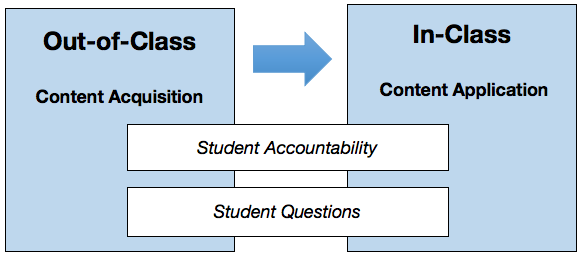What is it?
In traditional college classrooms, we’ve spent precious in-class time on the easy half of learning—delivering lectures that students passively absorb—and then students must tackle the more difficult application of the material by themselves on homework assignments.
Flipping the class reverses this: it moves passive learning outside of the classroom to make time in class for structured application activities that leverage the instructional power of student collaboration and just-in-time coaching from the instructor right in the moments that it is needed.
Flipping your class is not just about putting lectures online. Successful flipped classes involve:

- instructor-organized and –curated materials
- that students are held accountable to engage outside of class
- so they can work together in class
- on focused application activities,
- facilitated by the instructor.
As part of her Faculty Scholars project, Dr. Leslie Day flipped her Gross Anatomy course and found that her students not only did better in her class, but also in subsequent classes. Watch the video below.
“Flipping” your course design involves the same design process as hybrid course design:
- considering first what you want your students to do in class to apply course concepts, then
- determining what kinds of out-of-class resources they’ll need to prepare them for those in-class activities, and
- what forms of ongoing accountability and feedback will motivate them to stay engaged along the way.
